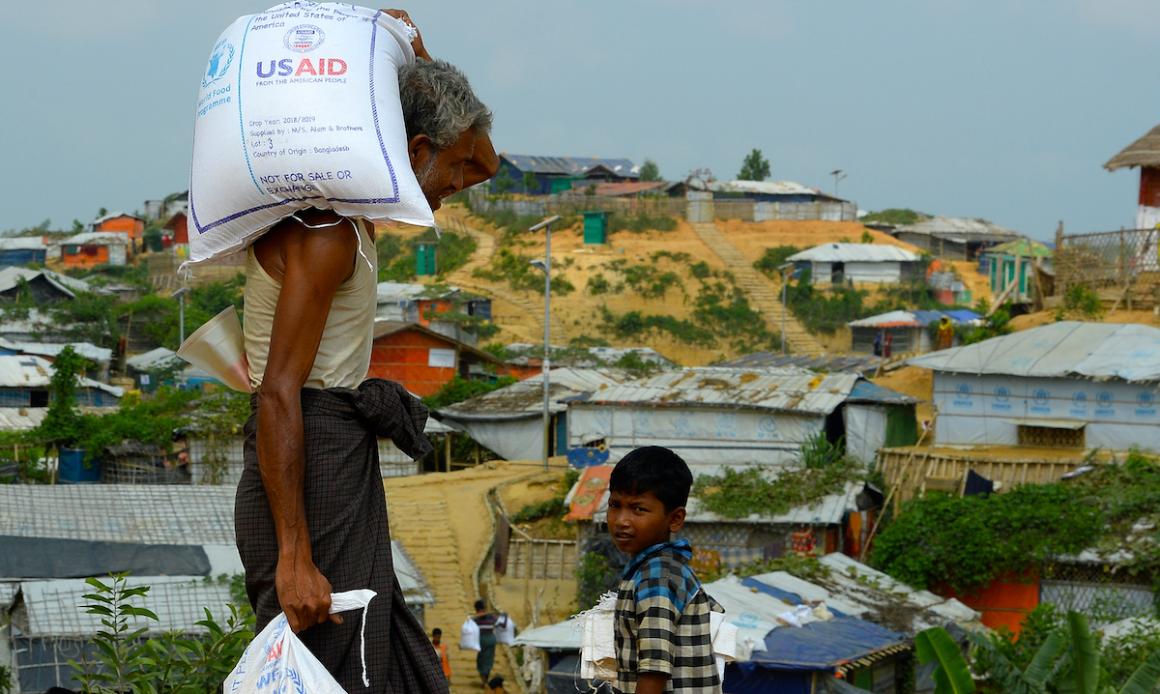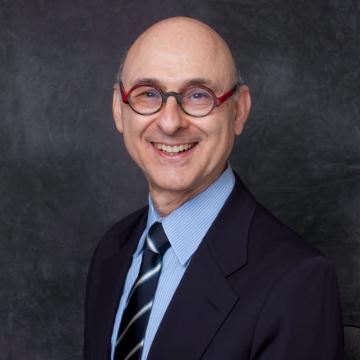
MY UNCLE, THE VISIONARY
The Nobel prize committee sent the world a series of imperative messages this fall when it announced that the United Nations’ World Food Programme (UN’s WFP) was the recipient of the 2020 Nobel Peace Prize.
The strongest message from the Nobel committee is that using starvation as a weapon of war is cruel, inhumane, and immoral; and they are telling us that starvation has been getting worse of late, not better.
The committee noted with concern that in recent years, conditions had begun to take a turn for the worse, and that last year “135 million people suffered from acute hunger, the highest number in many years. Most of the increase was caused by war and armed conflict.” Part of the committee’s concern reflects the recent decision by the American government to withdraw financial support from the UN because it disagreed with the WFP’s attempt to limit the role of politics in carrying out its policies.
The Nobel committee also wants us to understand that it is difficult to create conditions for peace when people go to bed hungry. The WFP has worked tirelessly to fight hunger, and that is the main reason they will be awarded the world’s most cherished prize for peace.
Peace does not get handed to humans on a platter. The paradox is that we have to fight for peace. The WFP is a success story in this regard, and for this reason it is worthwhile to review the history of how the WFP came into existence.
The WFP was created in 1961 at the behest of U.S. President Dwight Eisenhower as an experiment to test the feasibility of providing food aid through the UN.
While true, this description masks the vision, effort, and skill of the people who conceived the idea and worked to make it first a reality, and then a success. As it happens, one of those people was my uncle, the late Frank Shefrin, who retired in 1978 from his position as chair of Canada's Interdepartmental Committee on the WFP.
Long before 1961, Frank Shefrin understood the importance of using food programs as a means to help developing countries pursue development. He was one of the key architects of the WFP, and in the rest of the post, I want to communicate the lessons I learned from him about the way the WFP came into being.

Artwork by Sima Elizabeth Shefrin, daughter of Frank Shefrin. Her artistic works reflect themes of social justice.
What Frank Shefrin recognized, and explained to me in the 1960s when I was still a student of economics, was that for a program of this kind to be successful it had to be feasible along three dimensions: political, economic, and social. I remember being shocked when he told me that there was already enough food being produced in the world to eliminate hunger, meaning supply was not the problem.
I remember my uncle saying that financial self-interests and egos were the main obstacles towards progress. He told me that in building the architecture of the WFP, member governments, their delegates and the WFP secretariat had to make many ad hoc decisions. In particular, he emphasized the importance of leadership in addressing the many irrational arguments that were advanced at sessions of the governing body of the WFP.
The WFP came about as a third attempt by the UN, after two failures, to craft a program that would use food surpluses intelligently so that nobody in the world would have to go to bed hungry. The first attempt was in 1946 when the director general of the Food and Agricultural Organization (FAO) proposed a World Food Board. The second attempt was in 1949, when the FAO proposed an International Commodity Clearing House. Neither of these attempts gained much traction, largely because no constellation of policy makers viewed them as being in their own best interests. The proposals were just too ambitious to be a fit with policy makers’ incentives.
Decades after my uncle explained all of these issues to me, I developed a much deeper understanding of what he was saying. Becoming a behavioral economist certainly helped, as issues related to irrationality, ego, being overly ambitious, market pricing, and financial self-interest are all standard concepts in behavioral economics.
During the 1940s and 1950s, Frank Shefrin studied and wrote about the nature of farm production, agricultural pricing, and economic development. He was present as Canada’s delegate at an FAO conference in 1959 when Canada’s Minister of Agriculture floated the idea behind the WFP as a trial balloon. As point man for the Canadian delegation at that conference, Frank Shefrin occupied a central role in managing the discussion about how to move forward on the objective of building a multilateral food aid program.
Such a program would be structured to address two goals at once. The first goal related to the fact that the United States and Canada had large surpluses of wheat and dairy products. These surpluses needed to be managed in order to avoid low prices that would result from them being placed on the market. The second goal was feeding the hungry, with the goal of facilitating agricultural development in poorer countries. Using surpluses for food aid was already a feature of the U.S. Food for Peace Program, and provided the incentives necessary to move forward on the development goal.
Two years later, in 1961, support from government leaders in the U.S. and Canada led to a resolution being submitted to the UN General Assembly for a pilot version that would eventually evolve into the WFP that we have come to know, a multilateral organization bringing together donors and recipients in partnership.
On his retirement in 1978, Frank Shefrin described the WFP as “the greatest success story in the United Nations system.” Almost twenty years after the 1959 FAO conference, the WFP had approved 942 projects of food aid for economic and social development in 108 countries. The WFP had undertaken another 411 emergency operations—following droughts, cyclones, floods and disasters such as wars—in 93 countries.
Frank Shefrin passed away in 1989, but would have been extremely proud that the WFP that reflected his vision, effort, and skill would receive the Nobel Peace prize. In announcing the award, the Nobel committee described the WFP as the world’s largest humanitarian organization, providing “assistance to close to 100 million people in 88 countries who are victims of acute food insecurity and hunger,” that being one of the UN’s Sustainable Development Goals (SDGs). Now with the Covid-19 pandemic, the WFP is facing the extra challenge from an additional 130 million people that will be facing the threat of starvation, raising the total to nearly one quarter of a billion people.
There is much work to be done, and so the Peace prize should spur us to redouble our efforts in using the WFP to fight hunger and work for peace.
This column was originally published in Forbes on Oct. 13, 2020. Sima Shefrin's website is at http://www.stitchingforsocialchange.ca/about.htm.

